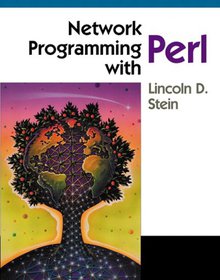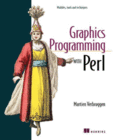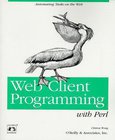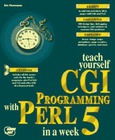Network Programming with Perl

Book Details:
| Publisher: | Addison-Wesley Professional |
| Series: | Addison Wesley |
| Author: | Lincoln D. Stein |
| Edition: | 1 |
| ISBN-10: | 0201615711 |
| ISBN-13: | 9780201615715 |
| Pages: | 784 |
| Published: | Jan 06 2001 |
| Posted: | Nov 19 2014 |
| Language: | English |
| Book format: | CHM |
| Book size: | 9.5 MB |
Book Description:
Any developer who's comfortable with Perl can build remarkably powerful TCP/IP network applications -- no C required! In Network Programming with Perl, Lincoln Stein shows how, step-by-step, with extensive code examples. Modeled on W. Richard Stevens' legendary Unix network programming book, this book opens up network programming to a new generation of programmer: Web developers ready to build serious network applications and solve complex network problems. Stein begins with an overview of Perl's increasingly powerful networking facilities; then introduces Berkeley Sockets, and the UDP and TCP protocols at the heart of network programming. He presents Perl's IO:: socket API, which simplifies the creation and use of sockets; demonstrates how to create forking servers; and introduces practical techniques for creating multithreaded and multiplexed applications. Modeled upon the style of Stevens, and using extensive sample code, Stein demonstrates all of the key features. Network Programming with Perl also includes chapter-length explanations of creating Internet modules for FTP and Telnet; Mail and News; and Web services.
Download Link:
Related Books:
Graphics Programming with Perl
A reference and introduction to graphics programming with Perl and Perl modules that includes simple graphics recipes and techniques for designing flexible graphics software. Perl users learn tools and techniques that can be used to create and manipulate graphics with the Perl programming language. Topics range from simple graphics recipes to the development and design of flexible graphics software. 20 line drawings, 10 tables, 30 screen shots....
Web Client Programming
With Perl
On the World Wide Web, people are accustomed to using graphical browsers such as Netscape Navigator or Mosaic as their only interface for visiting remote sites, accessing up-to-date documents, and filling out forms. But graphical browsers can be limiting: the very interactivity that makes them so intuitive to use also makes them clumsy for automating tasks. If you want to get the latest weather report every few hours, track a Federal Express package online, or use a dictionary server repeatedly throughout the day, using your browser to perform the same task over and over can become cumbersome. As with any repetitive task, these applications are best done by writing a script.Web Client Programming with Perl shows you how to extend scripting skills to ...
CGI Programming With Perl
Teach Yourself in a Week
This book is a step-by-step tutorial of how to create, use, and maintain Common Gateway Interfaces (CGI). It describes effective ways of using CGI as an integral part of Web development.-- Adds interactivity and flexibility to the information that can be provided through your Web site-- Includes references to major protocols such as NCSA HTTP, CERN HTTP, and SHTTP...
2007 - 2021 © eBooks-IT.org



